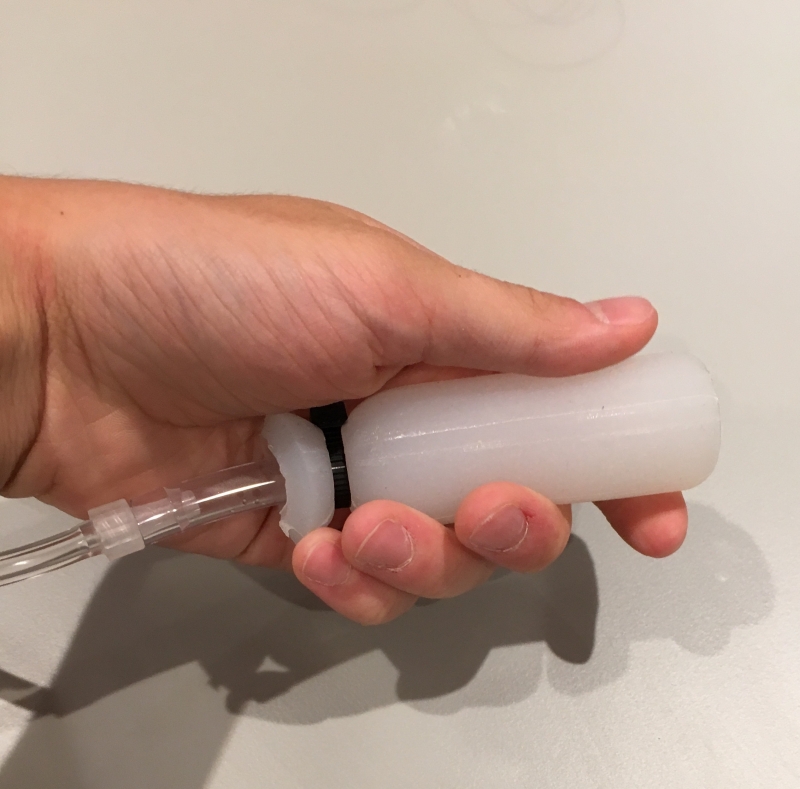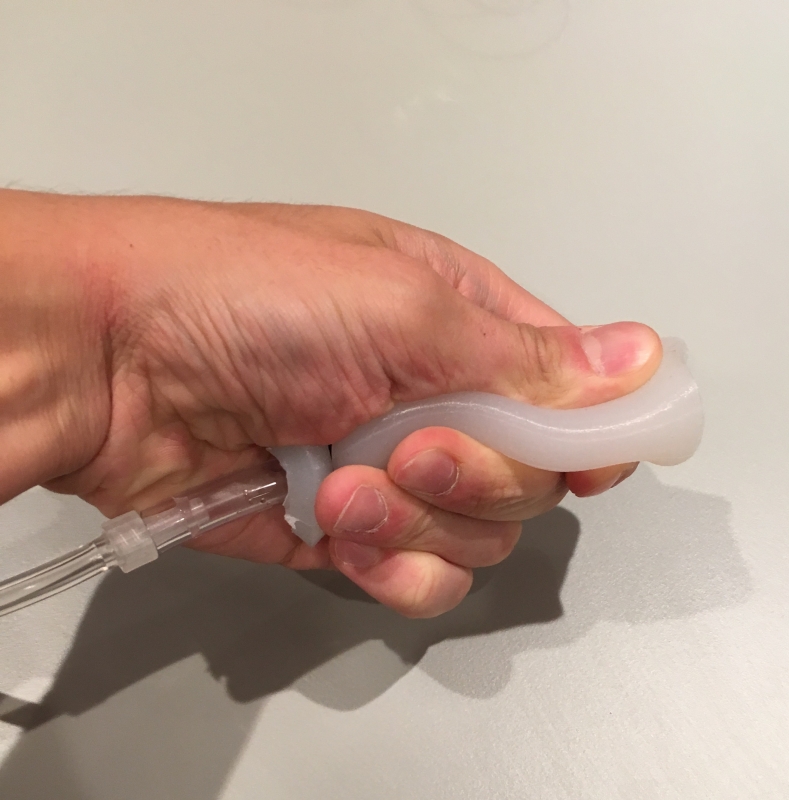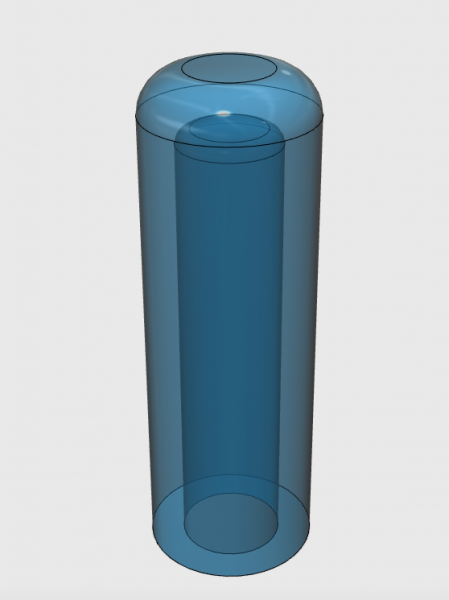When designing a Pneumatic Deformation Sensor, it is useful to use Boyle's Law. Boyle's Law states that volume and pressure are inversely related. It's equation is P1V1 = P2V2, where P1 and V1 are the initial pressure and volume and P2 and V2 are final pressure and volume. In a PDS, P1 is ~15 PSI, as that is atmospheric temperature (the PDS code subtracts this). V1 is the volume of the internal chamber of the PDS when not deformed. In Design 1, this is 21.5cm3. In order to figure out the pressure that the sensor will output when deformed, the volume of the sensor when deformed is needed. This is difficult to quantitatively measure and will depend on the type of deformation that the sensor is sensing.For example, a sensor designed to sense bending will deform less than one that is designed to sense compression. When compressed by hand, Design 1's volume decreases to ~13cm3. If the values that are known are substituted into the equation, the value of P2 can be found to be ~25 PSI. With the atmospheric pressure (~15 PSI) subtracted, 10 PSI can be seen as the maximum pressure that the sensor will output. This can be reversely used to design a PDS that will give a desired pressure output. For example, a sensor with an output pressure of 5 PSI can consist of a volume of 15cm3 if it's minimum deformed volume is ~11cm3.
In order for a sensor to provide feedback for a soft robotic actuator, it must be designed so that the actuator deforms the sensor when actuated. In the case of Design 2, the PneuNets Bending Actuator bends, compressing the sensor beneath it.



